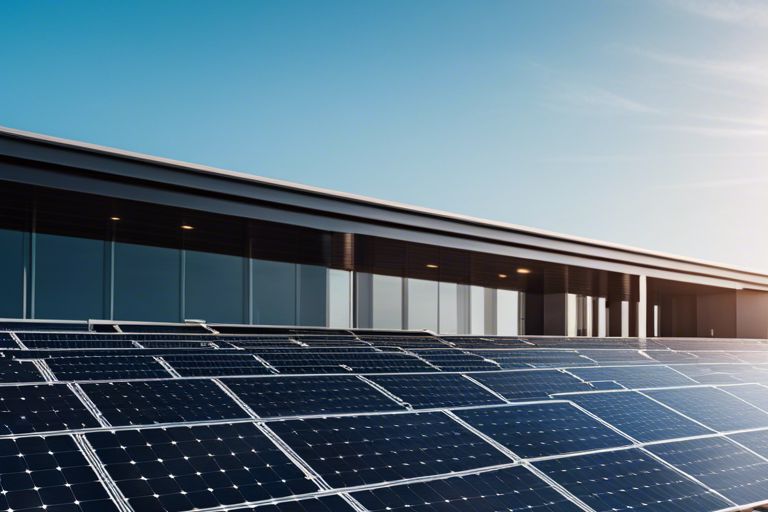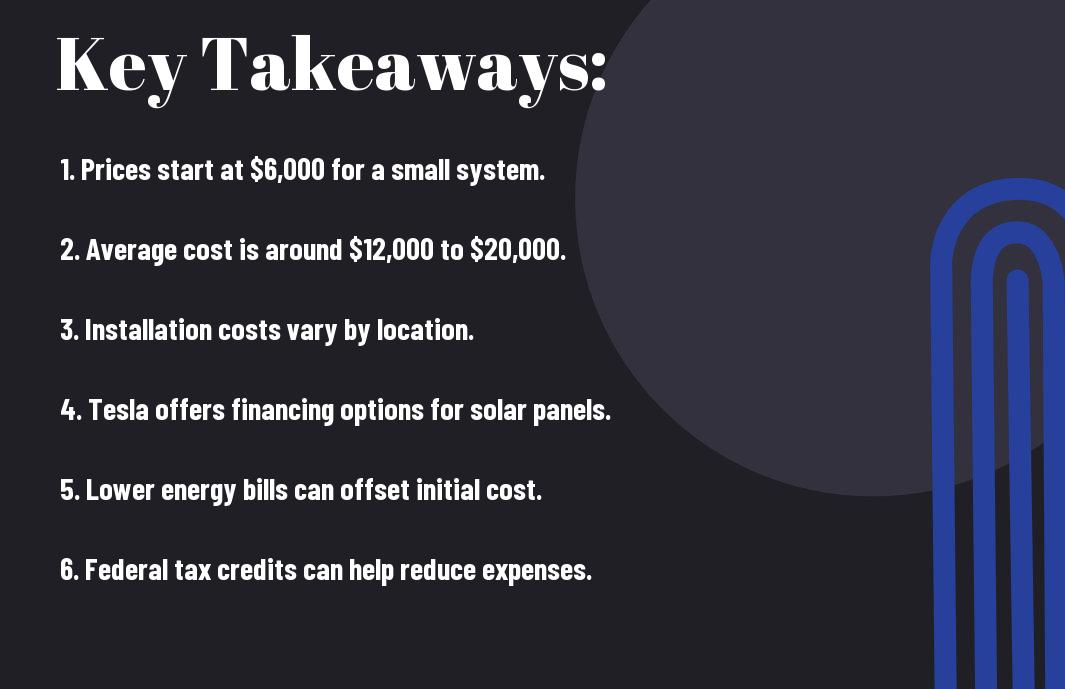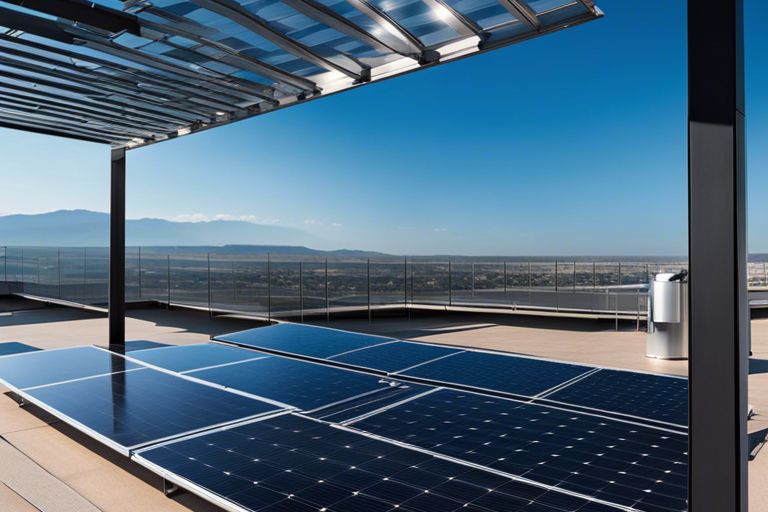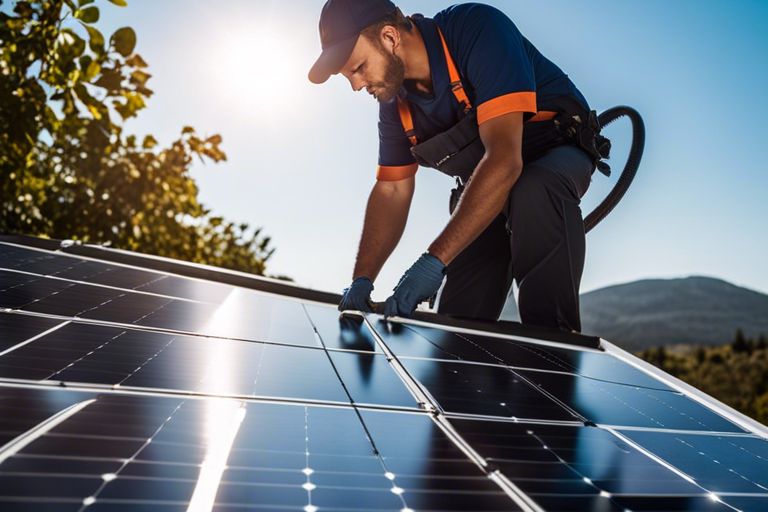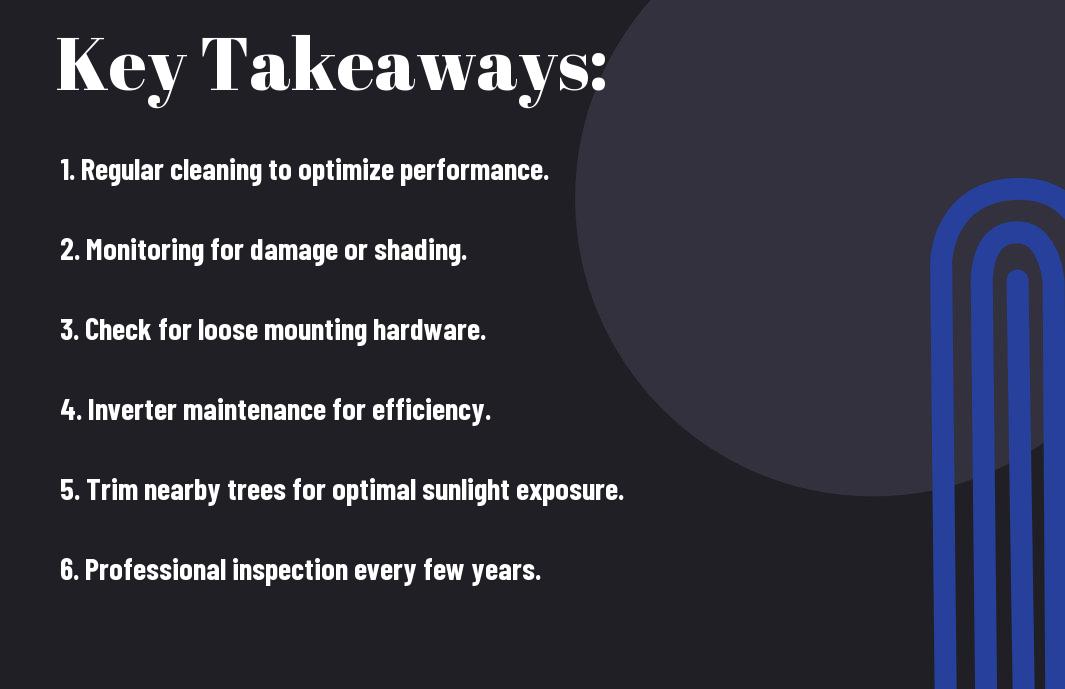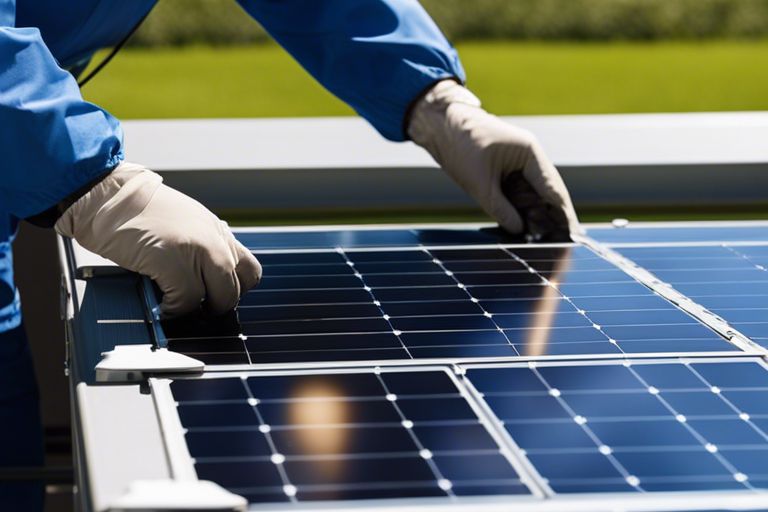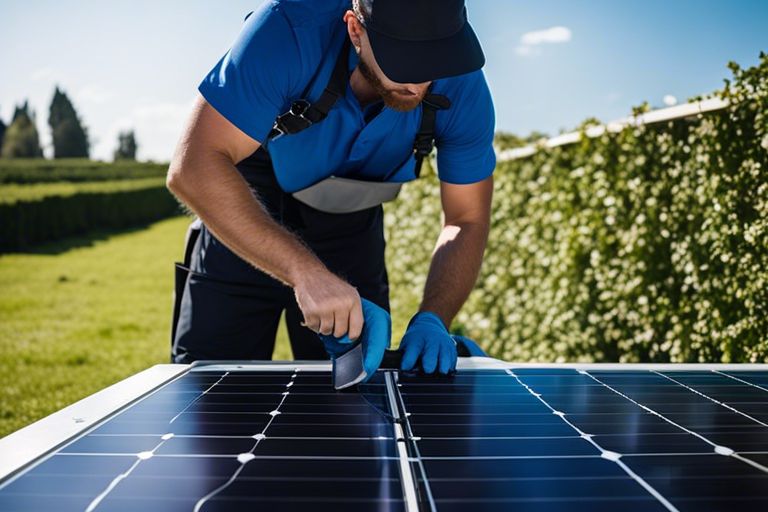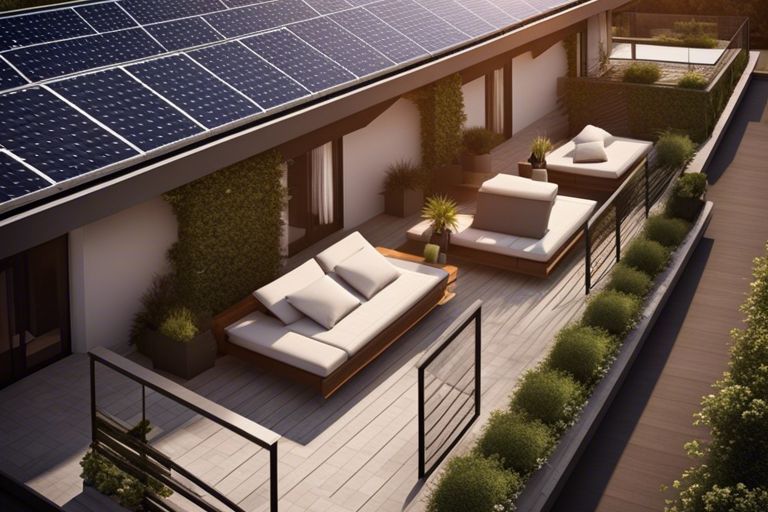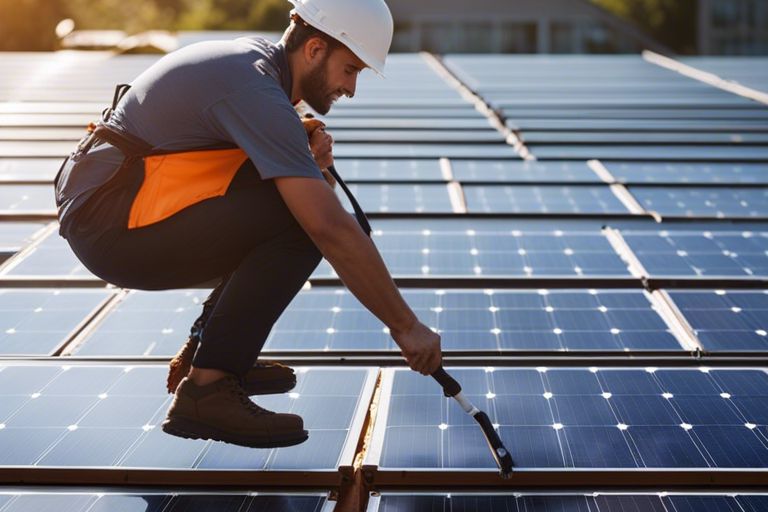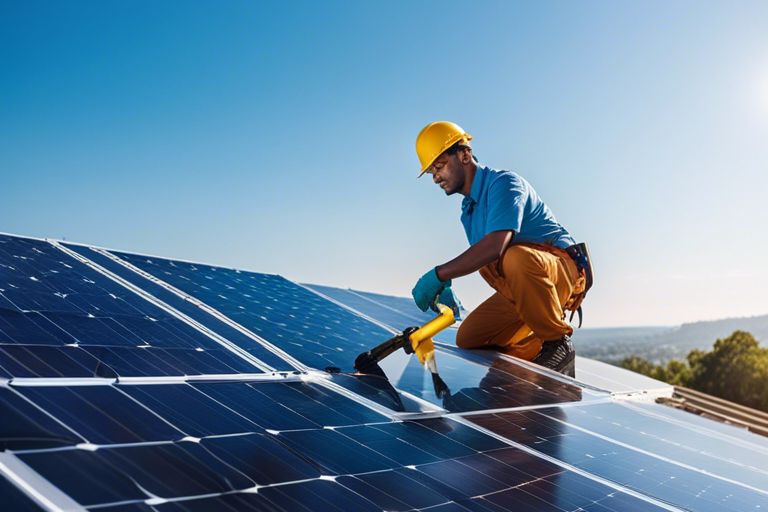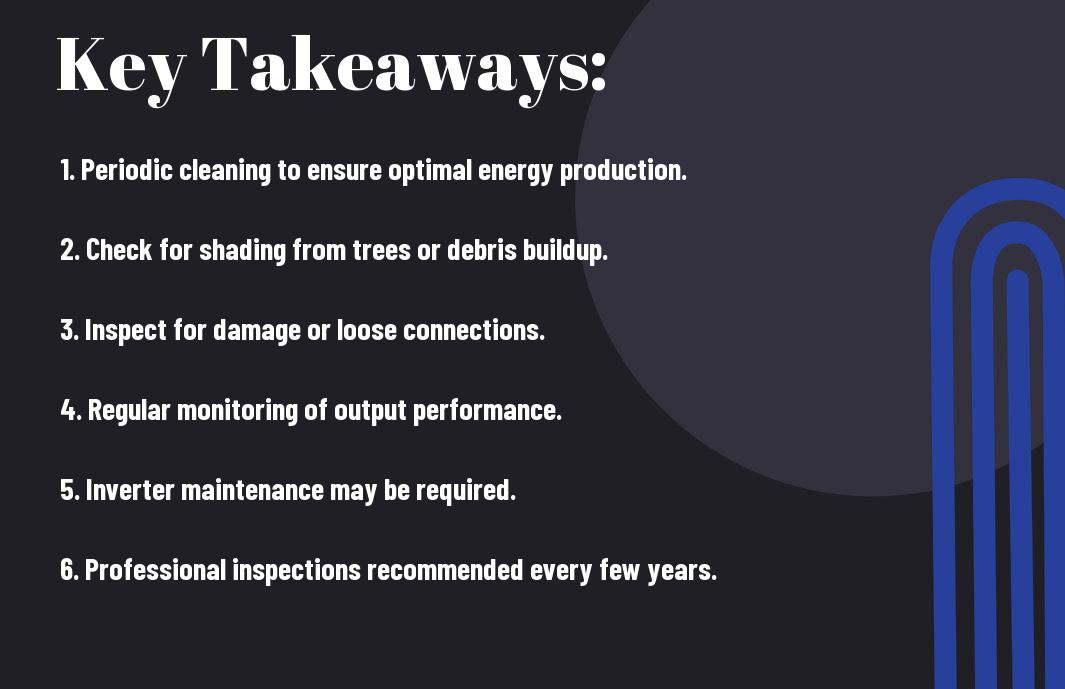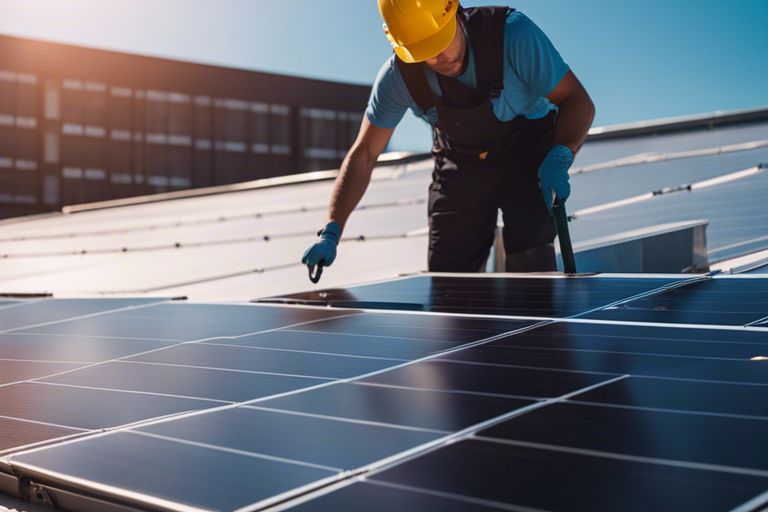There’s a lot of buzz around Tesla solar panels, but you might be wondering, “How much do they actually cost?” Understanding the pricing of Tesla solar panels can help you make an informed decision about investing in renewable energy for your home. In this article, we’ll break down the factors that influence the cost of Tesla solar panels, so you can get a clear idea of how much you can expect to pay for this sustainable energy solution.
Key Takeaways:
- Tesla solar panels can cost anywhere from $7,000 to $23,000 depending on the size of the system and other factors.
- The average cost of a Tesla solar panel system is around $16,000 after accounting for federal tax credits and other incentives.
- Tesla’s solar subscription service allows customers to get started with solar panels for as little as $65 a month with no upfront costs.
- Factors that can impact the cost of Tesla solar panels include the location of the installation, roof type, and energy usage.
- Tesla offers a price match guarantee to ensure customers are getting the best price for their solar panel systems.
The Cost of Tesla Solar Panels
Average Cost of Tesla Solar Panels
Average cost of Tesla solar panels can vary depending on the size of the system you need and your location. On average, a standard 4kW system from Tesla could cost you around $10,000 to $18,000 before incentives. This price includes the cost of the panels, inverter, and installation.
Factors Affecting the Cost
There are several factors that can affect the cost of Tesla solar panels. Some of these factors include the size of the system, your location, the condition of your roof, and any additional features you may want to add to your solar panel setup.
- The size of the system you need
- Your location and the amount of sunlight your area receives
- The condition of your roof and whether any repairs or modifications are needed
To get a more accurate estimate of how much Tesla solar panels will cost for your specific situation, it’s important to consider these factors carefully. Tesla offers a free consultation to assess your home and provide you with a customized quote based on your needs and requirements.
- Recognizing these factors and discussing them with a Tesla solar panel expert can help you determine the total cost of your installation.
Types of Tesla Solar Panels
Assuming you’re interested in investing in Tesla solar panels, it’s crucial to understand the types available. Tesla offers two main options: the Tesla Solar Roof and Tesla Solar Panels for existing roofs. Each option caters to different needs and aesthetic preferences. Let’s investigate into the specifics of each type to help you make an informed decision.
| Tesla Solar Roof | Tesla Solar Panels for Existing Roofs |
|---|---|
| The Tesla Solar Roof integrates solar cells directly into roof shingles, creating a seamless and visually appealing solar solution. | Tesla Solar Panels for existing roofs are traditional solar panels that can be retrofitted onto your current roof. |
| This option is ideal for homeowners looking to replace their entire roof and generate solar energy without the traditional appearance of solar panels. | These panels are suitable for homeowners who want to add solar capabilities to their existing roofs without a complete roof replacement. |
| The Tesla Solar Roof may have a higher upfront cost due to the roof replacement involved, but it offers a sleek and integrated look. | Tesla Solar Panels for existing roofs are typically more cost-effective since they do not require a full roof replacement. |
| Assess if the aesthetics and long-term benefits of an integrated solar solution are worth the initial investment for your home. | Consider the condition of your current roof and your budget constraints when deciding on retrofitting solar panels. |
Tesla Solar Roof
Panels integrated into the Tesla Solar Roof offer a seamless and sophisticated way to harness solar energy for your home. While the initial cost may be higher due to the roof replacement involved, the long-term savings on energy bills and the aesthetic appeal may make it a worthwhile investment for your property.
Tesla Solar Panels for Existing Roofs
Roofs retrofitted with Tesla Solar Panels provide a practical way to add solar capabilities to your home without the need for a complete roof replacement. These panels offer a cost-effective solution to generate renewable energy and can be a great option for homeowners looking to reduce their carbon footprint and energy costs.
It’s worth considering factors such as your roof’s condition, budget, and aesthetic preferences when choosing between the Tesla Solar Roof and Tesla Solar Panels for existing roofs. Each option has its own advantages and considerations, so make sure to evaluate your specific needs before making a decision.
Benefits of Tesla Solar Panels
Environmental Benefits
For those concerned about reducing their carbon footprint and helping the environment, Tesla solar panels are an excellent choice. By harnessing the power of the sun to generate electricity for your home, you can significantly reduce your reliance on traditional energy sources that contribute to greenhouse gas emissions. This means that by opting for Tesla solar panels, you are actively contributing to a cleaner, more sustainable future.
Financial Benefits
With Tesla solar panels, you can save money on your electricity bills. By generating your own power from the sun, you can reduce or even eliminate your monthly energy costs. Additionally, many regions offer incentives, such as tax credits or rebates, for installing solar panels, making the transition to solar even more economically beneficial.
Another financial benefit of Tesla solar panels is the potential to earn credits for excess energy produced. In some areas, if your solar panels generate more electricity than you use, you can sell the excess back to the grid, earning you credits on your utility bill.
Increased Property Value
Benefits of installing Tesla solar panels extend beyond just environmental and financial savings. One major advantage is the potential increase in your property’s value. Homes equipped with solar panels are often perceived as more desirable in the real estate market. Buyers are willing to pay more for a home with solar panels already installed, knowing they can benefit from lower energy costs and a greener lifestyle.
Tesla solar panels are not only a smart environmental choice but also a sound financial investment that can boost your property value, while also offering the satisfaction of contributing to a cleaner planet.
Tesla Solar Panel Installation Costs
Now let’s break down the costs associated with installing Tesla solar panels on your property. There are several components that contribute to the overall installation expenses, including labor costs, equipment costs, permits, and inspections.
Labor Costs
The labor costs for installing Tesla solar panels typically account for a significant portion of the total installation expenses. This includes the wages for the installation team, as well as any additional costs for specialized labor or expertise required for your specific installation.
Equipment Costs
For the installation of Tesla solar panels, you will need to consider the costs of various equipment needed for the installation process, such as mounting hardware, inverters, wiring, and other electrical components. These costs can vary depending on the size of your solar panel system and any additional features you choose to include.
For a more accurate estimate of the equipment costs, it is recommended that you consult with a Tesla solar panel provider who can assess your specific needs and provide a detailed breakdown of the equipment required for your installation.
Permits and Inspections
Any installation of solar panels, including Tesla solar panels, requires obtaining permits from local authorities and undergoing inspections to ensure that the installation meets building codes and safety regulations. These costs can vary depending on your location and the specific requirements set forth by your local government.
Another important factor to consider is the time and effort required to obtain permits and schedule inspections for your Tesla solar panel installation. It’s important to factor in these additional requirements when budgeting for your solar panel project.
Incentives and Rebates for Tesla Solar Panels
Your journey to harnessing clean energy with Tesla Solar Panels is not only environmentally beneficial but can also be financially rewarding. Here’s a guide to the various incentives and rebates available to help make your transition to solar power more affordable.
Federal Tax Credit
Credit to you, there is a Federal Investment Tax Credit (ITC) available for installing solar panels on your property. This incentive allows you to deduct a percentage of the cost of your solar system from your federal taxes. The ITC can significantly reduce the upfront cost of switching to solar energy, making it a smart financial investment for your home.
State and Local Incentives
Local governments and states also offer incentives to encourage the adoption of solar power. These incentives can vary widely depending on where you live, but they often include rebates, grants, or tax credits. Researching the available programs in your area can help you maximize savings on your Tesla solar panel installation.
This makes it crucial to check with your state and local authorities or a certified Tesla Solar Panels provider to explore the incentives that can further lower your overall costs.
Utility Company Rebates
Rebates offered by utility companies can provide additional savings when you switch to solar energy. Some utilities offer cash incentives or credits on your electricity bill for generating clean energy with solar panels. These rebates can further reduce the payback period of your solar investment, making it even more economically advantageous for you.
When considering installing Tesla Solar Panels, be sure to inquire about any available utility company rebates that can enhance the financial benefits of your solar power system.
Federal
Exploring all available incentives and rebates for Tesla Solar Panels can result in substantial cost savings and shorten the payback period of your solar investment. By taking advantage of these programs, you can make the switch to clean energy not only beneficial for the environment but also for your wallet.
Comparing Tesla Solar Panels to Traditional Solar Panels
Cost Comparison
Despite the initial cost being higher, choosing Tesla solar panels can give you long-term savings. While traditional solar panels may have a lower upfront cost, they might not offer the same quality and durability that Tesla panels provide. Investing in Tesla solar panels can potentially reduce your electricity bills over time due to their higher efficiency and reliability.
| Tesla Solar Panels | Traditional Solar Panels |
| Higher initial cost | Lower upfront cost |
| Long-term savings | Potential lower quality and durability |
Efficiency Comparison
Traditional solar panels may have lower efficiency compared to Tesla solar panels. The technology used in Tesla panels allows them to generate more electricity for the same amount of sunlight. This means that you can potentially produce more energy using fewer Tesla panels, making them a more efficient choice for your home.
| Tesla Solar Panels | Traditional Solar Panels |
| Higher efficiency | Lower efficiency |
| Produce more energy with fewer panels | May require more panels for the same output |
With Tesla’s innovative technology, their solar panels can harness more sunlight and convert it into usable electricity efficiently. This allows you to maximize the energy production of your solar system and potentially save more on your utility bills.
Aesthetics Comparison
Comparing the aesthetics of Tesla solar panels to traditional ones, Tesla panels are sleeker and more modern in design. They are designed to seamlessly blend in with your roof, giving your home a more polished and contemporary look. If you value the visual appeal of your solar system, Tesla panels may be the ideal choice for you.
| Tesla Solar Panels | Traditional Solar Panels |
| Sleek and modern design | Traditional appearance |
| Blends seamlessly with the roof | May not integrate as well with the aesthetics of your home |
On top of their exceptional performance, Tesla’s solar panels are designed to enhance the overall look of your home while providing you with clean energy. Their aesthetic appeal adds value to your property as they combine functionality with style.
To wrap up
From above, you now have a better understanding of the costs associated with Tesla solar panels. As you consider your options for solar energy, it’s important to weigh the upfront costs with the long-term savings and environmental benefits. To explore deeper into this topic, you can read more about How Much Do Tesla Solar Panels Cost?. Remember to explore different financing options and incentives that may be available to make the switch to solar energy more affordable for you.
Q: How much do Tesla solar panels cost?
A: The cost of Tesla solar panels can vary depending on the size of the system you choose and your location. On average, a 4kW system from Tesla can cost around $8,000-$10,000 after incentives.
Q: Are there any incentives available for purchasing Tesla solar panels?
A: Yes, there are incentives available for purchasing Tesla solar panels. These incentives can include federal tax credits, local rebates, and net metering programs which can help reduce the overall cost of installing solar panels.
Q: How can I get a personalized quote for Tesla solar panels?
A: To get a personalized quote for Tesla solar panels, you can visit the Tesla website and use their online calculator to estimate the cost of a solar system based on your energy needs and location. You can also schedule a consultation with a Tesla energy advisor who can provide you with a detailed quote tailored to your specific requirements.
